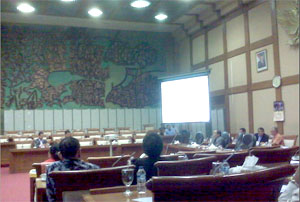Global health leaders gathered at Harvard University conclude
If the world’s nations are going to prevent tobacco smoking from causing one projected billion deaths by the end of this century, they must: Make tobacco control part of the agendas of United Nation’s and other development agencies worldwide; Assure every sector of a nation including health, trade and finance officials work collectively to protect not only health but the harm tobacco places on their economy by passing laws to reduce use; Place health as the centerpiece of any decision on a trade treaty that includes tobacco; Diligently work toward a goal of reducing the prevalence rate of smoking to less than five percent world-wide by 2048, basically ending its use.
Those were among the key recommendations to come out of an international gathering last week at Harvard University of public health officials, academics, and public health advocates from more 40 nations, and such international organizations as the European Union, the African Union, the World Trade Union, and the World Health Organization.
“The only entity in the world to benefit if tobacco use is passed down to the next generation of poor children of the world will be the tobacco industry,” warned Gregory Connolly, chair of the meeting and director of the Center for Global Tobacco Control at the Harvard School of Public Health (HSPH). Harvard School of Public Health. “All other industries producing good products and services will suffer, not benefit, and the same is true for the economies of poor nations and their citizens,” if smoking is not snuffed out. This meeting was an historic step to make global smoking history,” said who two decades ago crafted Massachusetts’s tobacco control efforts.
And Dr. Douglas Webb of United Nations Development Program warned that “tobacco use poses a major health and human development threat. Avoidable and unnecessary, tobacco-linked illnesses strike people in their prime, hit the poorest hardest, inhibit country productivity, burden already weak healthcare systems, and consume scarce national resources.”
Sponsors of the unusual two-day conference on “Governance of Tobacco in the 21st Century,” at Harvard’s Radcliffe Institute for Advanced Studies, included WHO, the Harvard Global Health Institute, the American Cancer Society, and the Institute of Global Tobacco Control, at Johns Hopkins University. Meeting attendees were warned by speaker after speaker that unless there is a concerted international effort now, the plague of tobacco smoking that has claimed 100 million lives in the Developed Nations, will claim a billion in the Developing Nations, where smoking has yet to take hold as it did during the last century in the U.S. and other Developed nations.
But though the situation was described as dire, many nations present showed unity in passing tough national laws based on the World Health Organization Framework Convention on Tobacco Control (FCTC) and demonstrated clear evidence of the scientific effectiveness of the FCTC in reducing use.
- Dimitry Yanin of Russia announced that Russian President Vladimir Putin banned smoking in all public places beginning this past June 2013. The legislation will also restrict cigarette sales and ban advertising and sponsorship of events by tobacco companies;
- H.E. Nicola Roxon, MP, and Former Attorney General and Minister of Health of Australia, reminded delegates to the that the Australian Supreme Court recently upheld legislation requiring plain pack cigarette packaging;
- Dr. Eduardo Bianco of Uruguay presented data on the sharp decline in smoking through the adoption of comprehensive tobacco control measures recommended by the WHO. The decline in Uruguay is comparable to that seen a decade ago in Massachusetts, where smoking is now a rarity, said MIT professor Jeffry Harris, who has evaluated both programs;
- Dr. Debby Sy, of the Philippines presented data on that nation’s recent successful efforts to greatly increase taxes on tobacco products, despite intense opposition from multi-national tobacco companies;
- And Dr. Bernard Merkel of the European Union described the EU’s new proposed directive that would allow EU nations to adopt plain packaging, high taxation, smoke-free public places and proven measures.
###
Other sponsors of the meeting included the American Legacy Foundation, the World Health Organization, the International Development Research Centre, the Medical University of South Carolina, the International Tobacco Control Policy Evaluation Project, at the University of Waterloo, the O’Neill Institute for National and Global Health Law, at Georgetown University, the Framework Convention Alliance of Action on Smoking and Health, the Campaign for Tobacco-Free Kids, and the Southeast Asia Tobacco Alliance.
(source: www.eurekalert.org)


 Jakarta-PKMK. Rancangan Undang-undang (RUU) Pendidikan Kedokteran ditargetkan disahkan menjadi Undang-Undang selambatnya 12 April 2013, ungkap Syamsul Bachri, Wakil Ketua Komisi X DPR RI ()4/3/2013. Hla ini sesuai dengan tenggat dalam Masa Sidang III 2012-2013 yang diberikan oleh Sidang Paripurna DPR RI.
Jakarta-PKMK. Rancangan Undang-undang (RUU) Pendidikan Kedokteran ditargetkan disahkan menjadi Undang-Undang selambatnya 12 April 2013, ungkap Syamsul Bachri, Wakil Ketua Komisi X DPR RI ()4/3/2013. Hla ini sesuai dengan tenggat dalam Masa Sidang III 2012-2013 yang diberikan oleh Sidang Paripurna DPR RI.